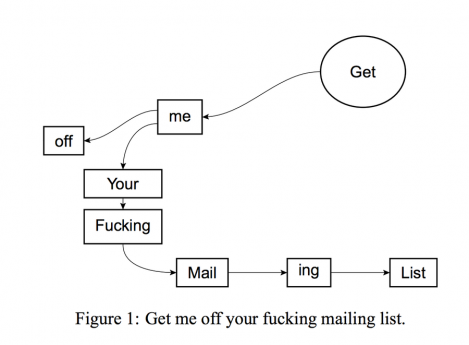
Baby Maggie Simpson and Mrs. Krabappel doing science. (Original art by former “Simpsons” animator Anna Maltese, used with permission).
Several times a week my email inbox contains offers to contribute to journals in subjects like engineering and agricultural sciences and in many other fields. The emails look legit, but my red flags go up nonetheless. I’m not an engineer, nor do I work in agriculture, or most other fields. I’m a geologist and paleontologist, and I teach geophysics, astronomy, oceanography, and meteorology, but I don’t work in every field of science. Clearly, my email address (which I willingly gave to legitimate scientific organizations) has been added to a compilation of scientists’ email addresses and sold and now every scam “journal” will spam me with these emails, not worrying about whether their “journal” is in my field or not.
This proliferation of “junk journals” is a relatively recent phenomenon, largely born from the ease of publishing electronically. Until about 15 years ago, most journals were only published in paper form, and either supported by a scientific society, or were profit-making journals run by major academic publishers. In each case, paper journals were a slow and costly enterprise when the editor had to screen manuscripts, solicit peer reviews, and then if the paper was accepted, it had to be edited, designed and laid out, printed and bound, and the journal mailed to subscribers. I spent hundreds of dollars a year in journal subscriptions, and kept active subscriptions to about a dozen geology and biology and paleontology journals, because I could never count on my local college library to have what I needed. With such costs, the journals had to maintain rigorous quality control, make sure they had competent editors and reviewers so the peer-review process was up to par, or else scientists and libraries would cancel their subscriptions and the journal would go under. Even the profit-making journals run by presses such as Academic and Elsevier and Wiley had to be reputable, or their journal would lose money.
But as more and more journals go to online-only publishing, and especially “open access” publishing (anyone can read online them for free), this cost barrier has nearly vanished—and with it, the incentives for rigorous peer review and quality control. In an effort to make more journals “open access,” many of the new electronic journals now charge the authors for the costs instead so that the content will forever be free and “gold open access.” The number of these “gold open access” journals have exploded, and they passed the number of conventional journals back in 2011.
But such a system is also ideal for abuse as well. There is a very low barrier to entry into this market, but there is also a fast and potentially large return on investment. Consequently, there are numerous “predatory publishers” releasing low-quality “journals” that have little or no peer review or editorial control. In addition, they deceive authors about publication fees, use the names of scientists as editors and reviewers without their knowledge, and often obfuscate the true location and identity of the publishers. Anyone can create an online journal with just a standard web template and software to do layout, and the only remaining cost is the editorial quality control. It’s no surprise then that some e-journals which are simply scams without any legitimate editorial staff or peer review could proliferate so quickly. All they need is content, and without an editor or any peer-review, they can click a few buttons and upload it to their web-based “journal”—and charge the scientist big fees to “publish” it.
The barrage of “predatory journals” or “junk journals” has become so large that several investigations have been conducted. Beall’s list is a compilation by University of Colorado librarian Jeffrey Beall of more than 500 “predatory journals” which do no peer review, solicit authors who are not qualified, and charge big publication fees. To test the sleaziness of the “predatory journals” on Beall’s list, Science magazine correspondent John Bohannon conducted a sting operation. He submitted a completely fake paper to flush out the “predatory journals” on Beall’s list. He used a Python program to create 304 versions of the same paper with fake data, completely nonsensical text, unsupported conclusions, and a rotating list of imaginary co-authors. Each was submitted to a different journal on Beall’s list. Any journal with one qualified peer reviewer would have spotted it instantly. Yet 60% of the “predatory journals” accepted it outright, and of the 36 journals that did solicit peer review comments, 16 still accepted the paper despite reviewers urging them to reject it. Bohannon’s report was published on October 4, 2013, in Science under the title “Who’s Afraid of Peer Review?”, and the scandal broke across the academic publishing world. Some of the “predatory journals” were shut down, especially those published by the major scientific for-profit publishers who didn’t need the bad reputation. But most are still in business, since they are immune to the pressures of legitimate science publishing. According to Bohannon’s expose:
About one-third of the journals targeted in this sting are based in India—overtly or as revealed by the location of editors and bank accounts—making it the world’s largest base for open-access publishing; and among the India-based journals in my sample, 64 accepted the fatally flawed papers and only 15 rejected them. The United States is the next largest base, with 29 acceptances and 26 rejections.
Journals published by Elsevier, Wolters Kluwer, and Sage all accepted my bogus paper. Wolters Kluwer Health, the division responsible for the Medknow journals, “is committed to rigorous adherence to the peer-review processes and policies that comply with the latest recommendations of the International Committee of Medical Journal Editors and the World Association of Medical Editors,” a Wolters Kluwer representative states in an e-mail. “We have taken immediate action and closed down the Journal of Natural Pharmaceuticals.”
In 2012, Sage was named the Independent Publishers Guild Academic and Professional Publisher of the Year. The Sage publication that accepted my bogus paper is the Journal of International Medical Research. Without asking for any changes to the paper’s scientific content, the journal sent an acceptance letter and an invoice for $3100. “I take full responsibility for the fact that this spoof paper slipped through the editing process,” writes Editor-in-Chief Malcolm Lader, a professor of psychopharmacology at King’s College London and a fellow of the Royal Society of Psychiatrists, in an e-mail. He notes, however, that acceptance would not have guaranteed publication: “The publishers requested payment because the second phase, the technical editing, is detailed and expensive. … Papers can still be rejected at this stage if inconsistencies are not clarified to the satisfaction of the journal.” Lader argues that this sting has a broader, detrimental effect as well. “An element of trust must necessarily exist in research including that carried out in disadvantaged countries,” he writes. “Your activities here detract from that trust.”
But submitting scientific gibberish as subtle as Bohannon’s is not really a requirement. Many of these “journals” will take any chunk of text and publish it without question or peer review, just so long as you pay up. Another “Trojan horse” paper was submitted by computer scientist Alex Smolyanitsky to several journals, all of which accepted it. The paper was also gibberish created by a random-text generating program called SciGen. A sample of the text was:
“We removed a 8-petabyte tape drive from our peer-to-peer cluster to prove provably “fuzzy” symmetries’s influence on the work of Japanese mad scientist Karthik Lakshminarayanan.”
But the piece de resistance is the fake authorship. Smolyanitsky chose the “authors” to see if anyone was paying attention. They included two characters from “The Simpsons” (baby Maggie Simpson, who is always sucking a pacifier, and eccentric teacher Ms. Edna Krabappel), and “Kim Jong Fun”. Their affiliations were fake universities, and the entire authorship should have given away the spoof if anyone had paid attention. As he said, “I wanted first and foremost to come up with something that gives out the fake immediately,” he says. “My only regret is that the second author isn’t Ralph Wiggum.”

One of the pointless garbage figures submitted for the paper, “Get me off your f*cking mailing list (PDF)“
And then there are journals that literally will publish anything without an apparent human intervention. An Australian computer scientist, frustrated with the barrage of emails to submit to these junk journals, wrote a paper consisting entirely of the text, “Get me off your f*cking mailing list!” (PDF) repeated over and over and over again for many pages (but with the appropriate headings for Abstract, Introduction, Methods, Results, etc.), and a bunch of completely bizarre illustrations. Yet it was accepted immediately by The International Journal of Advanced Computer Technology (once he paid his fees)! Ironically, thanks to an alleged journal about computer technology we find out that many of these predatory journals are just robotic programs that accept anything submitted, generate automated responses at each step—and no human is paying attention whatsoever.
So how did this abuse of the scientific publication process get so far? Sadly, with the “publish or perish” pressure most scientists face, it’s easy to be suckered in to submitting to a journal which seems legit, especially when it gets quick acceptance and is published and enhances your publication record. During a review of a scientist for productivity, a committee might look through a list of scholarly publications, but most people will not be savvy to the fact that some of those legit-sounding titles are actually scams. I’m always careful about where I submit, and try to submit to the highest-profile journals I can find for most of my publications—but after the frustration of rejection of a paper on which you worked hard, you’re always looking for some place to publish the work that’s not as picky as Science or Nature. Tenure-review committees have to be extra vigilant to spot these scams, and often use Beall’s list in evaluating papers outside their field of personal expertise. In Third World countries where the scientific infrastructure is not so well developed and there are few experts to catch them, this is particularly a problem. (Apparently, in India this is very common).
And then there are people who deliberately “publish” stuff in junk journals just to get the cachet of “publication” without having to submit their data or research to real scrutiny or criticism—and the general public is none the wiser. As I blogged about before, some of these claims about “life on meteorites” from crackpot creationist Chandra Wickramisinghe was “published” in the “Journal of Cosmology,” an obvious online scam journal. (It’s apparent just from the weird layout and color and design and the excessive use of Comic Sans font, the choice of crazies everywhere). Yet Huffington Post and many other media outlets believed the story and publicized it widely, not realizing the bad reputation of the source. In a 2013 SkepticBlog post, I detailed the story of Bigfoot “researcher” Melba Ketchum, who “published” her Bigfoot DNA research in the DeNovo Scientific Journal. She secretly owned the “journal,” and it “published” only one online issue with only one paper—her own. Thus, scam journals are a great place for pseudoscientists to claim “publication” of their “results,” and most people (other than professional scientists who know better) are not aware of the fraud being pulled on them.
The scientific peer review process is extremely crucial. It is one of the things that distinguishes science from most other fields of human thought, because of the rigor and quality control it brings. But just like any other human system, if there is a motive to scam people or to soak them for money, someone will figure out a way to game the system. Caveat emptor!











Dr. Prothero,
Are you aware of a Facebook group called christians against dinosaurs ? It may seem to be a satirical internet thing or POE but their more rabid members really believe that there is a satanical conspiracy of “big paleo” to corrupt the minds of little children and we poor adults have been lied too for so long. A member,Kent Dahlgren has offered up instances of peer reviewing scams as basis for his dis-belief. Crazy,crazy stuff
a law should be passed that it is a criminal offence to pass a theory as a fact.
So apart from Beall’s list, is there a dependable way to recognize when citations are from reputable journals? Is there a science-oriented “Snopes” that summarizes the quality of trending science stories? Or do we have to (gasp) just do the hard work of developing a knowledge base about what is trustworthy? The problem of finding a trustworthy source of guidance is not new. I have a book that is a small collection of Sufi stories, and it is interesting how many of them are about the paradox that an ignorant student is not the best judge of who to trust as a teacher. In one of the stories, the seeker roams the world in search of a mentor only to find that the greatest teacher in the world was his neighbour in their home town, and has died just as the seeker returns to his birthplace in despair. Cheery stuff.
Thanks for writing this.
I sometimes engage in ‘social debates’ with people in my circles about various topics like vaccinations. I’ve noticed an increase in people using these fake journals to back up their arguments. Most notably by people with no clue about science. They see the word journal and start linking.
Very frustrating. Good to see someone’s on it.
Good article. Isn’t it interesting that government reports have no “peer reviews” yet are accepted by the main line news media as true and factual. Example: 9/11 Commission Report, Warren Report on JFK Assassination, Fast and Furious Report, etc. No “peer reviews”, but reported as True and Factual. And Skeptics will quote these reports as being true. Yet there are no independent investigations of these government reports. No wonder a 2014 poll of citizens showed that 76% of Americans don’t trust their government.
Troll alert….
Cover up alert.
Yeah, my wife is a scientist at Washington University. She has the same problem with getting spammed with junk journals.
Dr. Prothero, you are the shit. I saw a video of you once (including Michael Shermer) where you presented fossil evidence for evolutionary theory, whilst simultaneously debunking creationist pseudoscience, and it was pure awesome. This article is no exception. Thank you for your efforts in advocating scientific honesty and literacy, and keep up the great work. By the way, I agree with Mr. Loxton above: that spoof research paper is a masterpiece of comic genius.
That may be the single funniest chart I’ve ever seen!